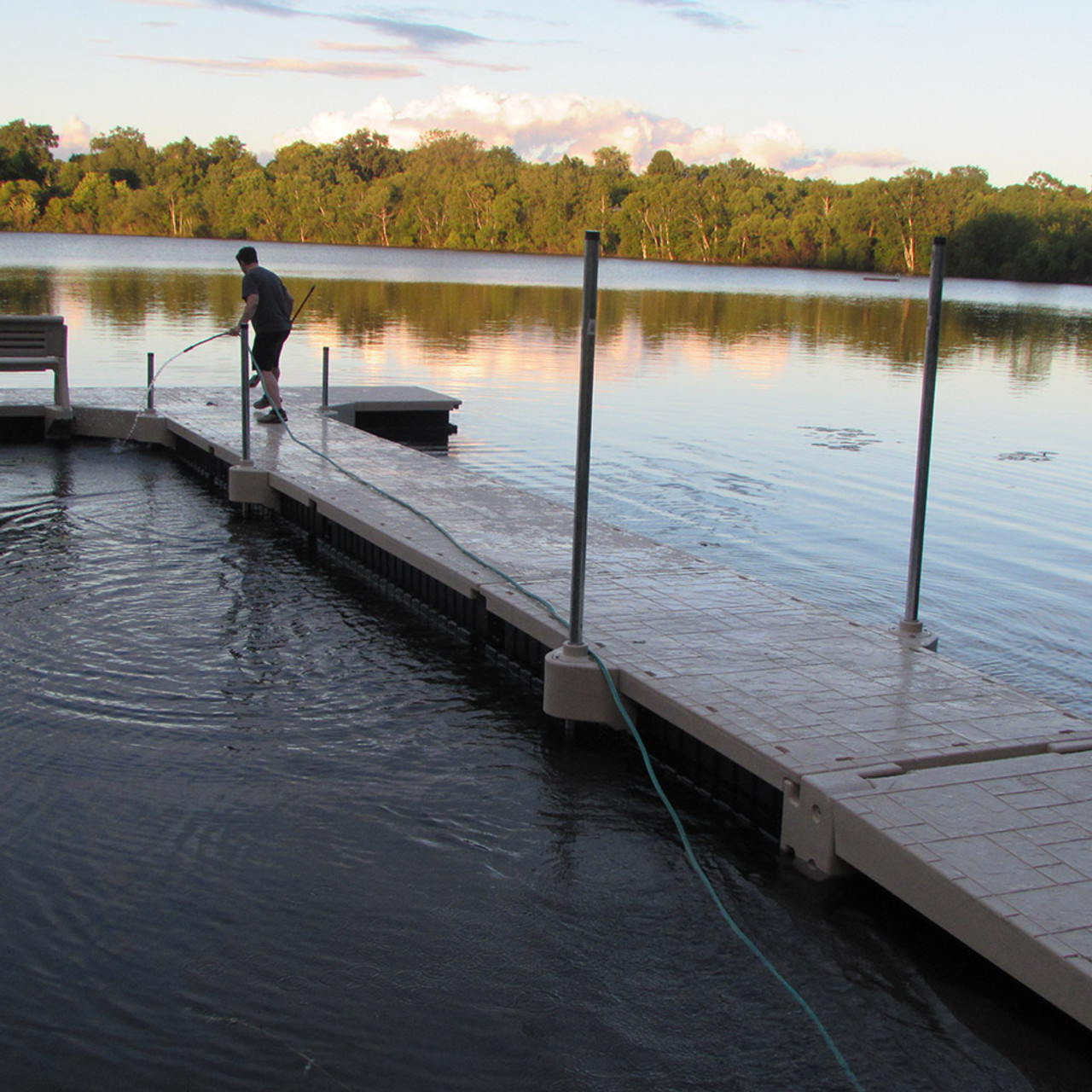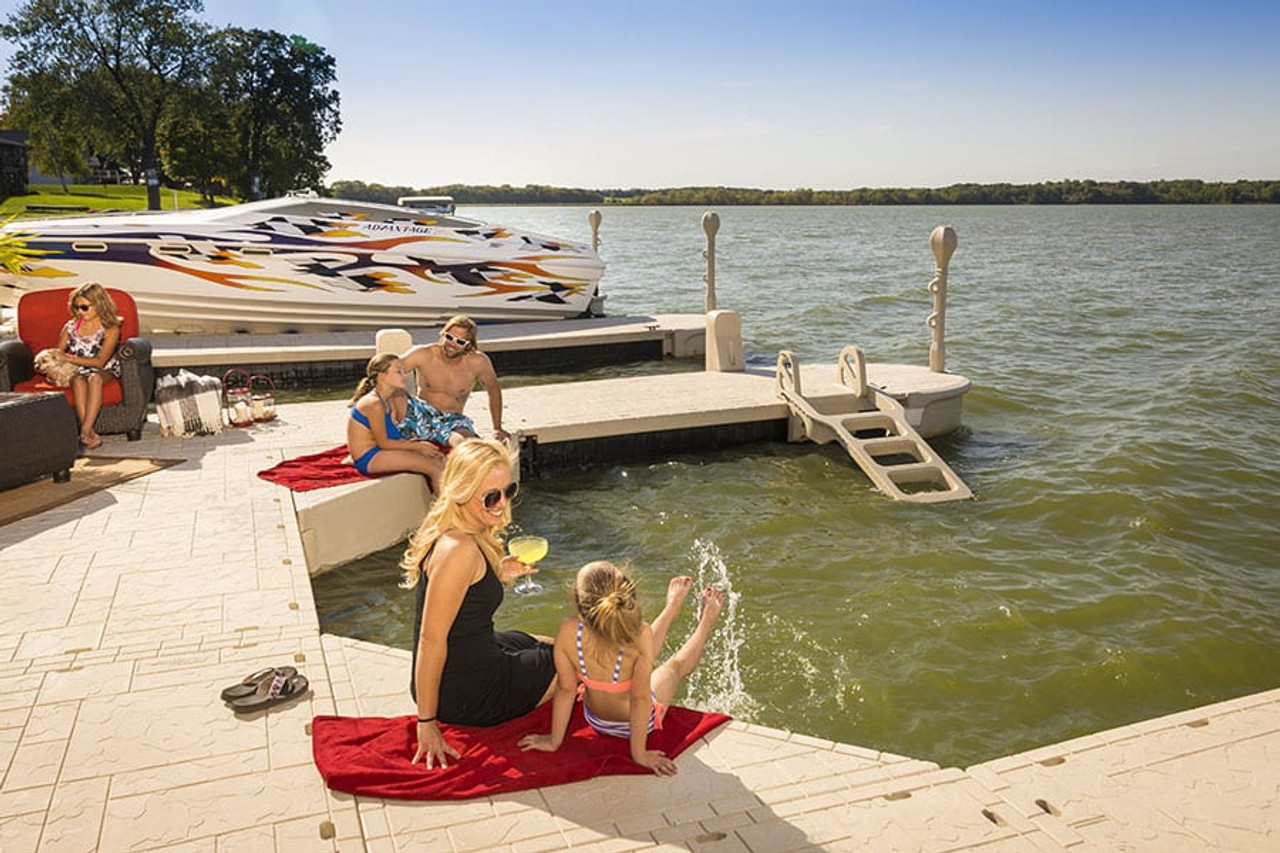Floating Docks: The Smart Choice for Modern Beachfront Living and Leisure
Floating Docks: The Smart Choice for Modern Beachfront Living and Leisure
Blog Article
Upgrade Your Waterfront With Long Lasting Floating Docks
Updating your waterside with sturdy floating docks can dramatically enhance both functionality and appearances, supplying a flexible service for different water tasks. With an array of products readily available, including low-maintenance choices and conventional wood, choosing the right dock can enhance your individual design and fulfill sensible requirements.
Advantages of Floating Docks
Floating docks deal a plethora of advantages that enhance their allure for various maritime applications. Among the main benefits is their adaptability to changing water degrees - floating dock services. Unlike standard fixed docks, floating docks fluctuate with the trend, ensuring regular access for watercrafts and boat no matter environmental problems. This attribute significantly minimizes the risk of damages to vessels, as they continue to be firmly moored even during fluctuations in water depth.
Furthermore, floating docks are easier to relocate and set up, offering versatility for seasonal or temporary use. Their modular style permits modification to fit particular requirements, whether for private marinas, property waterfronts, or business applications.
Additionally, floating docks develop very little disruption to the aquatic atmosphere, maintaining neighborhood communities and decreasing the likelihood of disintegration. They likewise supply improved safety and security and security for individuals, as their resilient nature offers an extra forgiving surface area than inflexible frameworks.
Moreover, floating docks can promote a varied series of activities, such as fishing, swimming, and recreational boating, making them an important possession for waterside growth. Their flexibility and usefulness make floating docks a preferred choice for a selection of marine projects.
Picking the Right Products
Choosing appropriate products for floating docks is important to their long life, performance, and total performance. When choosing materials, take into consideration factors such as ecological exposure, maintenance needs, and structural honesty. Typical materials consist of wood, plastic, light weight aluminum, and composite options, each offering distinct advantages and negative aspects.
Wood, while cosmetically pleasing, needs regular maintenance to stop rot and decay. Pressure-treated timber can improve sturdiness, however it may still give in to water damage over time. Plastic drifts, commonly made from high-density polyethylene, are resistant to rust and call for marginal upkeep, making them an appealing option for low-maintenance applications.
Light weight aluminum is one more sensible choice, known for its stamina and light-weight residential or commercial properties. It is immune to corrosion and can stand up to harsh weather problems, although it might be extra costly than various other materials. Composite products combine the best attributes of timber and plastic, offering a low-maintenance and durable alternative that mimics the look of wood without the connected disadvantages.
Inevitably, the option of product ought to align with the intended usage, ecological factors to consider, and budget restraints, making certain a practical and long lasting floating dock that meets your particular needs.
Installment Refine Review
The successful installment of a drifting dock counts on cautious preparation and implementation, making sure that it runs properly in its intended atmosphere. The very first step entails evaluating website conditions, including water depth, coastline attributes, and dominating climate patterns, which will certainly educate the dock layout and anchoring system.
Adhering to the site analysis, the following stage is to prepare the floating dock parts. This includes assembling the structure, safeguarding floats, and affixing any type of required equipment. It is crucial to guarantee that all connections are waterproof and durable to endure marine conditions.
When the dock is constructed, the setup process commences with placing the dock in the water. This can involve a crane or various other lifting tools, particularly for larger structures. Appropriate placement is vital for functionality and security.

Maintenance Tips for Durability
Regular upkeep is important for making certain the longevity and ideal performance of a drifting dock. To accomplish this, start with routine evaluations at the very least twice a year, concentrating on the honesty of the dock's structure, including the flotation devices and linking equipment. Look for indicators of wear, rust, or damages, and address any kind of issues without delay to avoid additional degeneration.
Cleansing is an additional important element of upkeep. Get rid of debris, algae, and barnacles from the dock's surface to stop unsafe conditions and keep visual charm. Utilize a mild detergent and a soft brush to prevent harming the dock's materials.
In addition, make sure that the dock is properly anchored and safeguarded to endure seasonal modifications in water levels and climate condition. Inspect the anchoring system for security and make adjustments as required.
Enhancing Your Outside Aesthetic
To develop a visually appealing exterior area, including a floating dock can substantially improve the total aesthetic of your beachfront property. Floating docks are not just functional yet can also act as a striking prime focus that complements the natural environments - floating dock company. Readily available in numerous materials and designs, these docks can be customized to match this content your residential property's this link building design and landscape
The addition of ornamental components, such as integrated illumination or stylish railings, even more raises the dock's aesthetic charm. Consider using all-natural wood coatings, which blend seamlessly with the setting, or selecting modern-day materials like aluminum or composite decking that provide a streamlined, modern look.
Purposefully placing planters or seating locations on or around the dock can develop welcoming spaces that motivate leisure and satisfaction of waterfront sights. Furthermore, including colors and structures that balance with your landscape will develop a natural aesthetic throughout your outdoor area.

Final Thought

Updating your beachfront with resilient floating docks can significantly enhance both functionality and visual appeals, giving a versatile solution for various water tasks. reference Unlike standard fixed docks, floating docks increase and autumn with the tide, making certain constant availability for watercrafts and watercraft no matter of environmental problems.Choosing ideal materials for floating docks is important to their longevity, performance, and overall performance.Once the dock is set up, the installation procedure starts with positioning the dock in the water.In recap, floating docks offer many benefits, consisting of versatility to water level modifications and a range of product alternatives.
Report this page